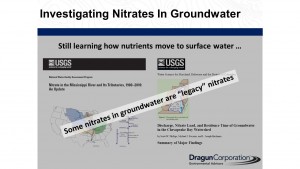The U.S. Environmental Protection Agency (EPA) has stated on several occasions that one of their priorities is to focus on agriculture. In fact, as we wrote in late 2015, the EPA stated that one of their six 2017-2019 focus areas was going to be “Preventing Animal Waste from Contaminating Surface and Ground Water.”
Environmental Enforcement at Concentrated Animal Feeding Operations (CAFOs)
However, in a recent article in Circle of Blue, author Brett Walton writes, “Federal inspections of cattle and hog feedlots, turkey houses, and other animal feeding operations dropped for a fourth consecutive year, according to U.S. Environmental Protection Agency data. The number of fines and orders to change management practices for those same facilities fell for a fifth consecutive year.”
This comes after President Barack Obama campaigned in 2008 to “strictly monitor and regulate pollution from large CAFOs.”
WOTUS Failure
One could argue that if the Waters of the United States (WOTUS) rule had not been held up in the courts, the regulatory landscape for farmers and many others would be very different today. WOTUS would have greatly expanded the regulatory reach in defining a water of the US and, consequently, those regulated under it. Perhaps President Obama was counting on a robust WOTUS rule and expanded regulatory reach to carry forth his promises relating to more strictly regulated CAFOs. Reading the report from the Committee on Oversight and Government Reform certainly makes one ponder this point.
The Source of Nutrients
For environmental groups and regulators the focus on livestock agriculture has been the issue of nutrients (mostly phosphorus and nitrogen). More specifically, the concern centers on the potential for nutrients to impact surface water (algal blooms) and groundwater (nitrates in drinking water).
As we have discussed on many occasions, nutrient impact on water resources is an extremely complicated issue with potentially significant consequences. By way of example, we have worked on projects that focus on using advanced scientific approaches to identify and differentiate the source of nitrates in groundwater (i.e., chemical fertilizers v manure applications). In these cases, the presence of the nitrates are not in question. What is in question is the source (who is responsible?).
Often the CAFO is the “simple” (some would argue “obvious”) target as the source. I would argue that this is too simplistic and that “simply” focusing on CAFOs is a shortsighted approach to solving the nutrient issue.
For example, in our back yard, there is a group called “Save Lake St. Clair.” They have on several occasions, posted videos regarding sewage “dumps” from publically owned treatment works (POTWs) into streams that discharge into Lake St. Clair. This video on their Facebook page says there was a discharge of 735 million gallons of sewage into Lake St. Clair last fall. Note that Lake St. Clair dumps into Lake Erie where a number of algal blooms have been blamed mostly on CAFOs and agriculture.

A slide from the presentation by Dr. Michael Sklash on investigating nitrates in groundwater.
What is happening to Lake St Clair is just a glimpse into a much larger problem associated with aging infrastructure across the US and Canada. A little over a year ago, the City of Montreal dumped 4.9 billion liters of raw sewage into the St. Lawrence River.
The sources that are leading to excessive nutrients in our lakes, rivers, and streams are many. And, again, the issue is complicated. If our collective aim is to solve the nutrient issue, then perhaps we can look beyond the number of inspections, the monetary fines, and enforcement associated with a given industry, and we can focus on better understanding the causes and relative contributions to the nutrient issue.
If you have any questions or comments (or would like information on how to differentiate sources of nitrates) please feel free to contact me (jbolin@dragun.com) at 248-932-0228, ext. 125.
